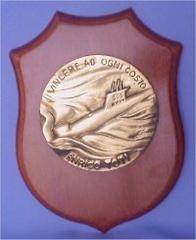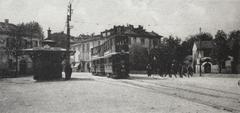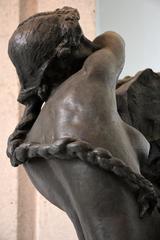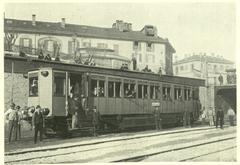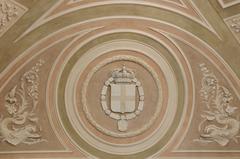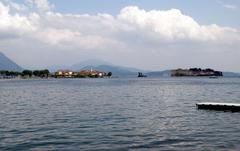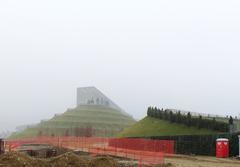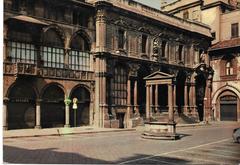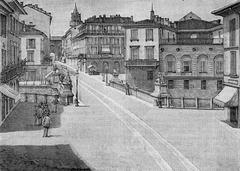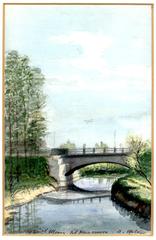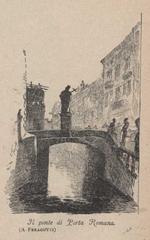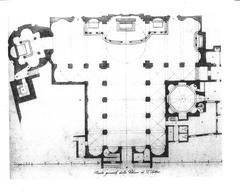Casa Galimberti Visiting Hours, Tickets, and Historical Significance in Monza, Italy
Date: 24/07/2024
Introduction
Casa Galimberti, located in the heart of Monza, Italy, is an architectural marvel that epitomizes the Art Nouveau movement, also known locally as ‘Stile Liberty.’ Constructed in the early 20th century, this stunning building has become an essential landmark for both architecture enthusiasts and cultural historians. Commissioned by the influential Galimberti family and designed by the renowned architect Giovanni Battista Bossi, Casa Galimberti stands as a testament to the artistic vibrancy and cultural innovation of its time (Barceló). This comprehensive guide delves into the rich history, intricate architectural features, and practical visitor information, making it your go-to resource for planning a visit to this iconic site.
Table of Contents
- Introduction
- Origins and Early Development
- Construction and Architectural Design
- Art Nouveau Influence
- Belle Époque Era
- Restoration and Preservation
- Current Use and Layout
- Architectural Features
- Cultural Significance
- Visitor Experience
- Visitor Information
- FAQ
- Conclusion
Origins and Early Development
Casa Galimberti stands on a site with a rich history. Originally, this location was occupied by the Società Anonima degli Omnibus (SAO), a company responsible for the city’s horse-drawn tram system. The SAO station served as the departure point for the Milan to Monza route. However, in 1900, the Edison company was awarded the contract to build an electric tram system, leading to the demolition of the SAO building complex, which housed around 300 horses and numerous workers (Barceló).
Construction and Architectural Design
The construction of Casa Galimberti began in 1903 and was completed in 1905. The project was commissioned by the Galimberti brothers, who were prominent urban developers in Milan. They had previously overseen the construction of Casa Campanini, another notable example of Milanese Art Nouveau. The architect Giovanni Battista Bossi was chosen to design Casa Galimberti, and he employed reinforced concrete for the building’s foundations to protect it from the dampness of the ground, through which the waters of the Gerenzana stream run (Barceló).
Art Nouveau Influence
Casa Galimberti is a quintessential example of the Art Nouveau movement, which aimed to transform every living space into a work of art. This style, also known as Italian Liberty, was characterized by its emphasis on beauty and artistic expression over practical considerations. The building’s façade is adorned with enamelled ceramic tiles, delicate columns, undulating shapes, floral patterns, and ornate iron railings. These elements combine to create a visually stunning and cohesive aesthetic (Barceló).
Belle Époque Era
Casa Galimberti was constructed during the Belle Époque, a period of great optimism, experimentation, and renewal in Europe. This era, which spanned from the end of the Franco-Prussian War in 1871 to the start of World War I, saw significant advancements in science, technology, and the arts. The Art Nouveau movement, which Casa Galimberti exemplifies, was part of this broader cultural shift, incorporating motifs from Japanese and African art and breaking away from traditional Western artistic conventions (Barceló).
Restoration and Preservation
Casa Galimberti has undergone several restoration efforts to preserve its original beauty and architectural integrity. In the 1990s, refurbishments focused on regaining the original color and shine of the tiles and floral motifs on the first floor and at the entrance. In 2018, restoration work was extended to the exterior walls, ensuring that the building’s façade remains as vibrant and captivating as it was when first constructed (Barceló).
Current Use and Layout
Today, Casa Galimberti serves both residential and commercial purposes. The ground floor houses shops and businesses, while the four upper floors contain four flats each. The building’s angular shape is a result of its location on the corner of Via Malpighi. Despite its practical uses, Casa Galimberti remains an aesthetic object, a testament to the triumph of beauty and art over the mundane (Barceló).
Architectural Features
The architectural features of Casa Galimberti are a testament to the creativity and innovation of the Art Nouveau movement. The first-floor balconies are framed by delicate columns, while the upper floors boast ornamental wrought-iron railings. The building’s façade is covered in enamelled ceramic tiles, creating a vibrant and colorful exterior. The use of reinforced concrete for the foundations and other structural elements demonstrates the versatility of this material, which was often considered less aesthetically pleasing (Barceló).
Cultural Significance
Casa Galimberti is not just an architectural marvel; it is also a cultural landmark that reflects the artistic and intellectual currents of its time. The building embodies the spirit of the Belle Époque, a period marked by a sense of optimism and a desire to break free from traditional constraints. The Art Nouveau style, with its emphasis on beauty and artistic expression, was a perfect fit for this era of experimentation and renewal (Barceló).
Visitor Experience
Visitors to Casa Galimberti can admire its stunning façade and intricate architectural details. The building’s location in Milan makes it easily accessible for tourists exploring the city’s rich cultural heritage. Whether you are an architecture enthusiast or simply appreciate beautiful design, Casa Galimberti offers a unique glimpse into the artistic and cultural history of early 20th-century Milan (Barceló).
Visitor Information
- Visiting Hours: Casa Galimberti is accessible to the public from 9 AM to 6 PM, Monday to Saturday. It is closed on Sundays and public holidays.
- Tickets: Entry to Casa Galimberti is free of charge, but guided tours are available for a fee. Check the official website for the most current prices and availability.
- Nearby Attractions: While visiting Casa Galimberti, you can also explore nearby attractions such as the Porta Venezia, Villa Necchi Campiglio, and the Indro Montanelli Public Gardens.
FAQ
-
What are the visiting hours for Casa Galimberti? Casa Galimberti is open from 9 AM to 6 PM, Monday to Saturday.
-
How much are tickets to Casa Galimberti? Entry is free, but guided tours are available for a fee. Check the official website for details.
-
Is Casa Galimberti wheelchair accessible? Yes, the building is equipped with ramps and elevators for accessibility.
Conclusion
Casa Galimberti stands as a testament to the artistic and cultural vibrancy of the Belle Époque and the Art Nouveau movement. Its rich history, stunning architectural features, and ongoing preservation efforts make it a must-visit destination for anyone interested in the history and beauty of Milanese architecture. Plan your visit today and immerse yourself in the splendor of this Art Nouveau gem. For more detailed information on visiting hours, ticket prices, and guided tours, it is advisable to check the official website and local tourism portals. Ensure you also explore nearby attractions such as the Monza Cathedral and Villa Reale di Monza to make the most of your visit (Barceló).
References
- Barceló. Casa Galimberti in Milan. Retrieved from Barceló



